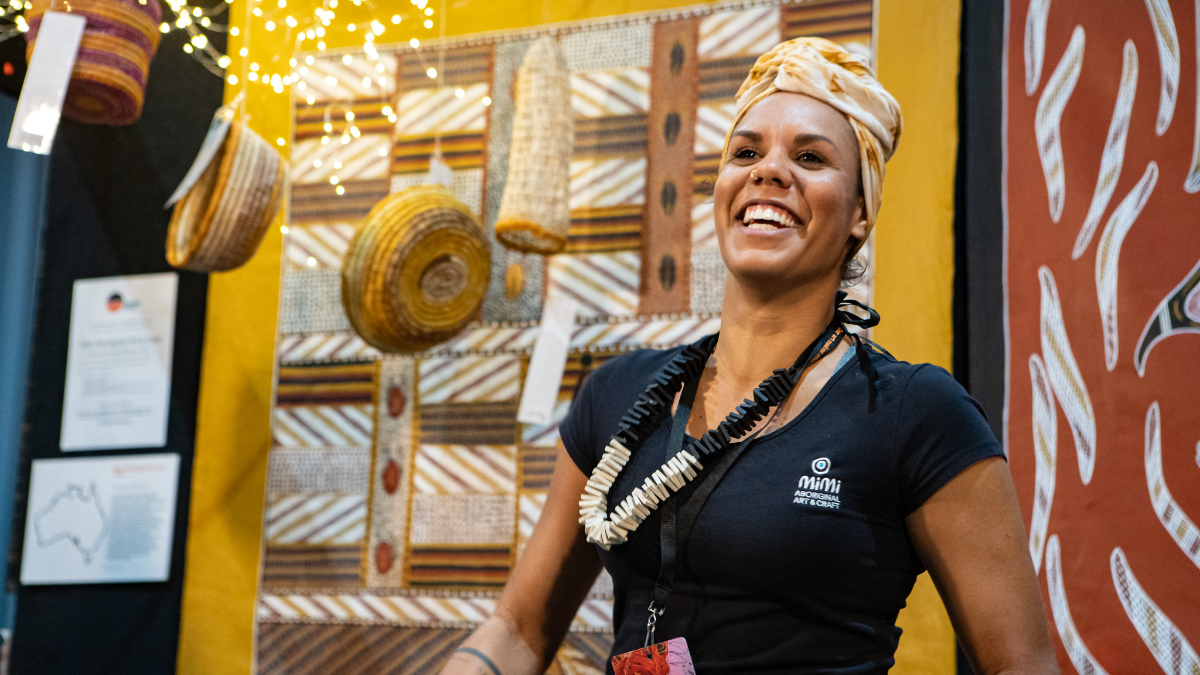When COVID-19 hit Australia, the Darwin Aboriginal Art Fair Foundation (DAAFF) team knew they had a vital role to play in not just supporting Aboriginal and Torres Strait Islander artists, but also helping to protect these vulnerable groups from the potentially devastating impacts of the virus.
Owned by a membership of Indigenous Art Centres and peak bodies, DAAFF provides platforms for Aboriginal and Torres Strait Islander art and culture.
The Foundation runs the annual Darwin Aboriginal Art Fair plus other events, including the National Indigenous Fashion Awards and the Country to Couture runway performance, which debuted this year.
Planning was underway for the 2020 art fair when the pandemic cast doubt on the event and threatened Indigenous communities. DAAFF research found that its events were crucial not just to the survival of the arts sector but also to the economic health of communities.
“Some of the Art Centres make a quarter of their annual turnover through our events,” says Claire Summers, DAAFF Executive Director. “So, doing nothing was not an option.”
Rather than cancelling the art fair, the small but passionate DAAFF team went digital, developing an online platform within just three months, and fast-tracking the digital component of their strategic plan by five years.
The platform involved a complete website refresh and the creation of e- commerce portals for all 69 participating Art Centres, giving them autonomy over their own sites.
“We have a very dedicated group of staff who committed their everything to the event’s success,” says Claire.
Led by Artistic Director Shilo McNamee, DAAFF also reimagined the art fair’s public program, using Zoom’s video platform to deliver live-streamed artist masterclasses, talks, cultural performances and more.
“The public program is designed to attract and engage new audiences, and we believe it also serves to gently educate audiences about the importance of Art Centres and ethical art buying practices,” says Shilo.
“It is also a vehicle for artists to connect and share in their own words.”
Remarkable results through digital transformation
The online event was a huge success, far exceeding the team’s expectations: more than 6,000 artworks were uploaded for purchase, representing 1,335 artists and generating over A$2.6 million in sales – all of which went directly to the Art Centres and their communities.
The fair reached a bigger audience than ever before: the website had almost 45,000 unique visitors (compared to over 17,000 in-person attendees in 2019) and almost three-quarters were first-time visitors.
The public program was just as successful: all ticketed events sold out within 24 hours, and people around the world were given a rare and intimate glimpse into the artists’ work and their communities.
“We were incredibly proud and excited to see the public embrace the online public program,” says Shilo. “By embracing the digital space and adapting the way they share their art and culture, artists are further empowered to create and pursue opportunities, and reach new national and international audiences.”
The success of the digital platform has opened up major business opportunities, allowing DAAFF to truly engage in export markets and showcase Indigenous art to the world.
“These are turbulent economic times, but it’s also an opportunity to look at where you want to be in the next five years and think of creative ways to achieve that through digital platforms,” says Claire.
Keep up to date with our stories on LinkedIn, Twitter, Facebook and Instagram.

